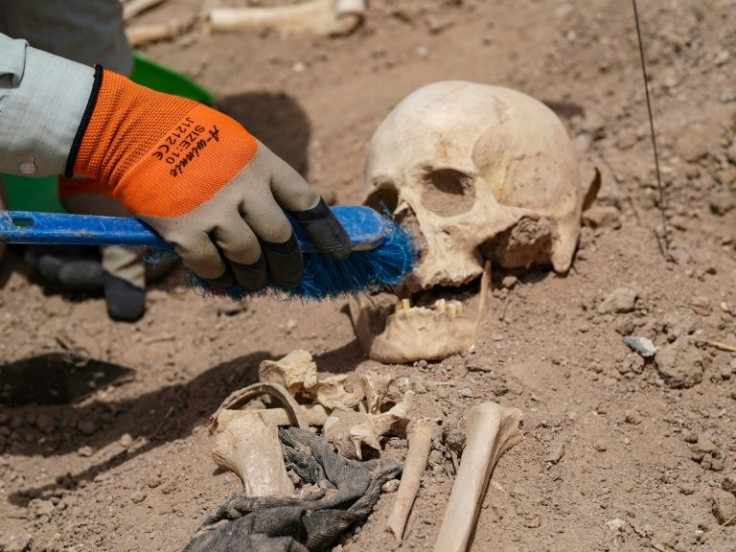Medieval Skulls Found More Than 60 Years Ago Brought To Life With 3D Reconstruction [Photos]
KEY POINTS
- The skulls belonged to a young woman, a priest, and a bishop
- The site is famously called Scotland's "cradle of Christianity"
- The life-like faces move, blink, and even smile
Three skulls discovered in a medieval crypt in Scotland in 1957 were re-engineered to come to life, using 3D reconstruction.
The facial reconstruction along with voice-over and animation of the three skeletons were presented as part of the Bishops, Bones and Burials talk at the Wigtown Book Festival on Friday.
The project named Cold Case Whithorn was carried out under the aegis of The Whithorn Trust. It is a Scottish charity that looks after Whithorn Priory, the site where the skeletons were found. The site is also famously called Scotland's "cradle of Christianity".
The skeletons that were uncovered belonged to a young woman, a priest, and Bishop Walter. The latter became the community's bishop in 1209, according to National Museums Scotland.
Amazing facial reconstructions by Dr Chris Rynn, involving @UniofBradford experts @AdrianEvans and @ShirleyCurtisS1, in collaboration with @WhithornTrust, @amaldon, @CaseWhithorn, @NtlMuseumsScot, @DumGalMuseums et al.#archaeology #forensics #Scotland https://t.co/5AHMTA32us pic.twitter.com/YZAC3I3V9Z
— Bradford Archaeology and Forensics (@BradArcForensic) October 1, 2022
The three skulls were given on loan by National Museums Scotland and Dumfries and Galloway Council museums for 3D scanning by Dr. Adrian Evans at the University of Bradford.
"I didn't want these faces to look like a digital sculpture, so when it came to the muscles, I sculpted them in wax and then 3D scanned them the same way that the skull was scanned," Chris Rynn, a forensic craniofacial anthropologist based in Scotland, said in a video presentation about the project.
"I made it look like a person by adding photographic textures, which is a process of selecting photographs of several different people that look similar to the 3D model and then projecting it onto the skull," Rynn added.
Artificial intelligence was used to make animations that made the life-like faces move, blink, and even smile, making it feel like they were alive today.
The skulls were quite interesting to work on for Chris Rynn.
"The skulls were really interesting to work on side by side because one of them, the priest with the cleft lip and palate, is the most asymmetrical skull I've ever worked on," Rynn said in the video. "The other, the young woman, is the most symmetrical skull I've worked on."
The 3D animations will be put on display at the Whithorn Trust visitor center.
"The chance to see and imagine that we can hear these three people from so many centuries ago is a remarkable way to help us understand our history and ancestry," Julia Muir Watt, the trust's development manager, said.
"It's always a challenge to imagine what life was really like in medieval times, and these reconstructions are a brilliant way to engage with who these people from our past really were, of their everyday lives, their hopes, and their beliefs," Watt concluded.

© Copyright IBTimes 2024. All rights reserved.





















